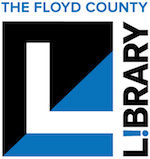April 25th is National DNA Day!
The National Human Genome Research Institute (NHGRI) is leading the celebration of National DNA Day, which was established in 2003, to commemorate the completion of the human genome project and the discovery of DNA’s double helix in 1953. “The National Human Genome Research Institute began celebrating DNA Day annually on April 25th after the 108th Congress passed concurrent resolutions designating it as DNA Day (Genome, 2022).”
DNA stands for Deoxyribonucleic Acid and is the “chemical name for the molecule that carries genetic instructions in all living things (NIH, 2022).” DNA has two strands that twist to form a double helix, and each strand consists of alternating sugar and phosphate groups. Each sugar has one of four bases (adenine, cytosine, guanine, and thymine) and the bases serve as blueprints for assembling proteins and RNA molecules (NIH, 2022).
Want to learn more about DNA and the advancements of science that followed the discovery? The Library has plenty of books to get you started!
This work explores the discovery of DNA and the key figures surrounding the incredible discovery.
The Secret of Life is a story of genius and perseverance, but also a saga of cronyism, misogyny, anti-Semitism, and misconduct. Drawing on voluminous archival research, including interviews with James Watson and with Franklin’s sister, Jenifer Glynn, Markel provides a fascinating look at how science is done, how reputations are undone, and how history is written, and revised.
A vibrant evocation of Cambridge in the 1950s, Markel also provides colorful depictions of Watson and Crick–their competitiveness, idiosyncrasies, and youthful immaturity–and compelling portraits of Wilkins, Pauling, and most cogently, Rosalind Franklin. The Secret of Life is a lively and sweeping narrative of this landmark discovery, one that finally gives the woman at the center of this drama her due.
CRISPR : a powerful way to change DNA By Yolanda Ridge
CRISPR stands for clustered regularly interspaced short palindromic repeats. If it sounds complicated, it is–but it’s also one of the most powerful ways we can shape the future. And it’s poised to completely upend the way we think about science.
Author Yolanda Ridge tackles this topic in a friendly and accessible tone, with two introductory chapters covering the basics of DNA and gene editing before taking readers through the ways that this ground-breaking science could affect them by potentially:
* eliminating diseases like malaria and cancer,
* improving the stability of our food supply, and
* helping to manage conservation efforts for threatened animals and environments.
But all of these possible advancements come with risks, the biggest being that the consequences are unknown. Chapters end with “Stop, Go, Yield” sections encouraging readers to consider the pros and cons of using CRISPR. “Cutting Questions” give readers the opportunity to further reflect on the ethics of the science.
CRISPR is a game changer. This important book, with detailed scientific illustrations, brings much needed clarity to a topic that will affect readers for generations to come.
A handful of discoveries have changed the course of human history. This book is about the most recent and potentially the most powerful and dangerous of them all. It is an invention that allows us to rewrite the genetic code that shapes and controls all living beings. As a result, dreams of genetic manipulation have become a stark reality: the power to cure disease and alleviate suffering, as well as to re-design any species, including humans, for our own ends.
Jennifer Doudna is the co-inventor of this technology – known as CRISPR – and a scientist of worldwide renown. Writing with fellow researcher Samuel Sternberg, here she provides the definitive account of her discovery, explaining how this wondrous invention works and what it is capable of. She also asks us to consider what our new-found power means: how do we enjoy its unprecedented benefits while avoiding its equally unprecedented dangers?
https://www.genome.gov/genetics-glossary/Deoxyribonucleic-Acid
https://www.genome.gov/dna-day
